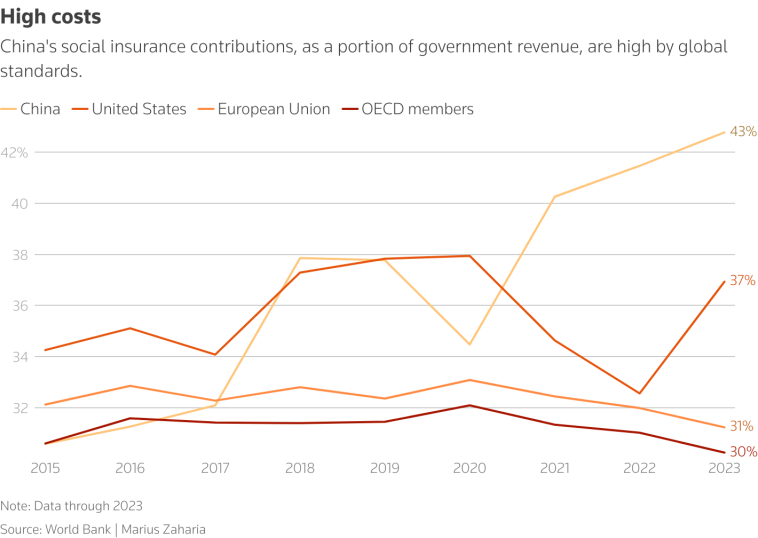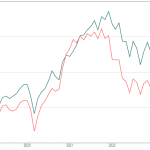
The Changing Landscape of Business: A Multifaceted Perspective
In today’s rapidly evolving economy, business owners, industry leaders, and policy makers are all challenged to figure a path through a maze of tricky parts, tangled issues, and intricate little distinctions. From small business growth to the latest innovations in industrial manufacturing, automotive trends, and electric vehicles, the journey is full of shifts and changes. At the same time, evolving business tax laws and economic news create both opportunities and nerve-racking uncertainties. In this opinion editorial, we take a closer look at these subjects, offering insights and perspectives that will help decision makers as they steer through the twists and turns of today’s dynamic market.
The opinions expressed below are based on observations of the current landscape across various sectors. With a focus on practical guidance and key insights, this piece is meant to serve as a reflective resource for those looking to get around the complicated pieces of modern business. We will dig into each major sector, discuss their challenges and opportunities, and propose strategies that small business owners and industry stakeholders might consider when planning for the future.
Strategies for Small Business Growth Amid Economic Shifts
Boosting Local Enterprises with Targeted Marketing Approaches
Small business is the backbone of the economy, yet many entrepreneurs still find the road ahead intimidating. The market is fiercely competitive, and the little bits that differentiate one business from another can be subtle yet critical. In an ever-changing economic environment, small business owners need key strategies to ensure their brands are visible and their products and services resonate with consumers.
A number of factors contribute to the success of small businesses, with customer-centric marketing at the forefront. Here are some effective strategies to consider:
- Hyperlocal Outreach: Engaging with the community where you do business can build loyalty and generate positive word-of-mouth.
- Digital Storytelling: Sharing your brand’s journey through engaging content helps to create a memorable identity.
- Social Media Engagement: Connecting with customers on platforms like Facebook, Instagram, and LinkedIn can strengthen relationships and boost sales.
- Personalized Experiences: Tailoring your customer service and client interactions can transform first-time buyers into loyal customers.
Small businesses can also take advantage of new technological innovations to streamline operations and optimize marketing efforts. Tools that enable advanced analytics, customer relationship management, and even targeted advertising campaigns empower entrepreneurs to find their way amid market uncertainty.
Adapting to Economic News and Market Trends
In today’s world, economic news is released rapidly, leaving business owners to figure a path through a flood of information. While staying informed is essential, it’s equally important to distinguish between temporary anxiety and long-standing trends. In this regard, it helps to create a structured approach to absorbing economic news:
- Schedule Regular Briefings: Designate time for reviewing financial updates. This helps prevent making off-putting, knee-jerk decisions based on overwhelming or scattered news updates.
- Utilize Trusted Sources: Not all information is created equal. Rely on well-respected financial analysts, government reports, and reputable news outlets.
- Create a Decision Matrix: List potential economic scenarios, along with strategic responses. This method will help manage rash decisions when the market is on edge.
Taking a methodical approach enables business leaders to make informed decisions that are less influenced by short-term fluctuations—a necessity when working through small distinctions that may seem minor at the time but add up to significant impacts in the long run.
Industrial Manufacturing: Conquering Tricky Challenges in a Modern Era
Embracing Technological Advancements
The industrial manufacturing sector is no stranger to changes and challenges, and recent years have seen rapid technological innovations reshaping the field. Companies must figure a path through a maze of complicated pieces, including robotics, automation, and smart technologies. Integrating these tools effectively not only improves efficiency but also helps companies manage production costs and meet customer expectations.
For many manufacturing firms, the process of incorporating new technologies can be overwhelming. However, several steps can help ease the transition:
- Assess Current Capabilities: Start by evaluating your existing production processes to identify which areas have room for improvement.
- Invest in Employee Training: Equip your workforce with the skills needed to adapt to new tools and methods.
- Collaborate with Tech Partners: Working with technology providers can help identify solutions tailored to your production requirements.
- Pilot Programs: Implementing trial runs before full-scale adoption allows companies to get around mistaken assumptions and fine-tune performance.
With technology evolving rapidly, industrial manufacturers must stay flexible, continuously monitoring the latest developments. Taking a closer look at emerging trends, such as the Internet of Things (IoT) and artificial intelligence (AI), can reveal fine points of operational efficiency that may not be immediately apparent at first glance.
Quality Control and Supply Chain Management During Uncertain Times
Maintaining quality control and efficient supply chain management is a perpetual challenge in industrial manufacturing. Business owners often find themselves figuring a path through tangled issues that affect every facet of production. From sourcing materials to delivering products, the process can involve numerous nerve-racking steps.
To mitigate risks, companies should consider refining their supply chain strategies. Some practical steps include:
- Diversification of Suppliers: Relying on multiple vendors can reduce the impact of unexpected disruptions.
- Strategic Inventory Management: Keeping an optimal level of inventory ensures that production isn’t halted by delays.
- Regular Audits: Conducting periodic quality checks across all stages of production to catch any issues early on.
- Supplier Collaboration: Building strong partnerships with suppliers can result in faster problem solving when unforeseen issues arise.
These steps can help industrial manufacturers not only manage but also preemptively address the intimidating obstacles that arise from both internal processes and external influences. The goal is to create a resilient supply chain that withstands the volatile changes of the global market.
Automotive Innovations and the Electric Vehicle Revolution
From Traditional Vehicles to Electric Mobility
The automotive sector is in a state of rapid transition. Traditional gas-powered vehicles are steadily giving way to electric alternatives, a change driven by environmental concerns, regulatory pressures, and technological advancements. This shift, though promising, comes with its own set of confusing bits and challenging transitions.
Electric vehicles (EVs) are not just vehicles—they represent a broader shift in consumer expectations and technological progress. Here are some detailed points to consider for automotive businesses transitioning to electric mobility:
- Infrastructure Development: Adequate charging networks and maintenance facilities are essential. Companies must work with local governments and private partners to expand EV charging availability.
- Adapting Production Lines: Transitioning from internal combustion engines to electric drivetrains involves retooling factories—a process that, while overwhelming at times, is necessary for future competitiveness.
- Consumer Education: Educating driving enthusiasts about the benefits, limitations, and environmental impacts of EVs is critical to changing long-held perceptions.
- Government Incentives: Understanding and leveraging federal and state incentives can significantly ease the cost pressures associated with launching EV products.
Automotive companies face several obstacles as they embark on this transformation. However, by embracing a forward-thinking approach and investing in innovation and infrastructure, the transition to electric vehicles can be managed in a way that minimizes risk while maximizing long-term gains.
Integrating Smart Technologies into Vehicle Design
Beyond the shift to electric power, the next frontier in automotive innovation lies in smarter, more connected vehicles. Modern consumers demand cars that are equipped with advanced features, such as autonomous driving, real-time data analytics, and interconnected systems that offer a seamless mix of comfort, safety, and entertainment.
Car manufacturers can find their way through these enhancements by focusing on several key areas:
- Software Integration: Robust in-vehicle software platforms not only enhance driving safety but also create opportunities for continuous vehicle upgrades.
- Connectivity: The integration of cellular and Wi-Fi connectivity within vehicles allows for real-time diagnostics, predictive maintenance, and improved customer support.
- Data Security: With increased connectivity, protecting user data becomes a super important task, requiring manufacturers to invest in advanced cybersecurity measures.
- User Interface Design: Simplified, user-friendly interfaces can greatly improve the overall user experience, making advanced features easily accessible to all drivers.
These points highlight not only the immediate benefits of incorporating smart technologies but also the broader shift towards a more integrated and connected automotive future. It is a journey that, while filled with fine shades of debate and the occasional nerve-racking technological challenge, promises to enhance the way we drive and perceive transportation.
Understanding the Shifting Terrain of Business Tax Laws
Decoding the Business Tax Framework for SMEs
For small business owners and mid-sized enterprises, keeping up with business tax laws is a never-ending challenge. The tax framework is often loaded with issues that can feel both intricate and intimidating, especially in a climate where regulations are subject to rapid change. Rather than shy away from these potentially overwhelming details, business owners are encouraged to get into the fine points of tax law and compliance.
Here are some strategies to effectively figure a path through current tax regulations:
- Regular Consultations with Tax Experts: Firms specializing in tax law can provide insights into recent regulatory updates while helping businesses plan ahead.
- Invest in Accounting Software: Modern accounting solutions can streamline record-keeping and ensure compliance with evolving standards and deadlines.
- Workshops and Seminars: Attending regular informational sessions can help business leaders stay on top of small distinctions that matter most in tax law.
- Government Resources: Utilize official sites and publications that offer non-biased, official guidelines to keep abreast of changes.
It is important for companies to adopt a proactive approach when dealing with regulatory updates. While tax matters may sometimes seem like a maze of intimidating rules and nerve-racking deadlines, the application of systematic methods and expert advice can transform these overwhelming pieces into manageable tasks.
Planning for Regulatory Changes in a Tense Economic Environment
The economic environment is constantly shifting, and with regulatory changes come both challenges and opportunities. Business leaders need to figure a path through the subtle details that are often the make-or-break components of successful compliance. The key is to treat predictions about regulatory changes not as a source of anxiety but as a stimulus to innovate and improve processes.
Some approaches include:
- Scenario Planning: Develop several potential regulatory outcomes and craft specific response plans for each scenario.
- Internal Audits: Regular self-assessments will help indicate where the business stands in terms of preparedness.
- Collaboration with Industry Peers: Sharing insights and strategies with others can provide a broader view and enhance your ability to manage through these changes.
- Consult Legislative Updates: Keeping an ongoing tab on legislative proposals can help preempt and adapt to changes before they become a pressing issue.
The ability to work through these changes is not only essential but also an opportunity to overhaul outdated processes, ultimately leading to greater operational efficiency and long-term financial health. By building in flexibility and maintaining rigorous oversight, businesses can reduce the intimidating aspects of tax law compliance.
Marketing in the Modern Business Arena: A Ground-Up Look
Crafting Effective Messaging for Diverse Audiences
The modern business world is full of competing voices, each fighting for the attention of a distracted and digitally savvy public. In such a crowded space, crafting effective marketing messages that resonate with your audience can seem both nerve-racking and full of problematic pitfalls. Yet with a thoughtful approach, even the most off-putting marketing challenges can be transformed into opportunities for deeper connection.
Here are some methods to consider when developing your messaging strategy:
- Audience Segmentation: Break down your customer base into subgroups and tailor your communication efforts specifically to each segment.
- Consistent Branding: Ensure that your brand identity is recognizable and remains consistent across all channels.
- Value Proposition Emphasis: Clearly articulate the benefits and unique value your product or service provides.
- Interactive and Engaging Content: Leverage social media, video, and other digital formats to foster engagement and build loyalty.
Effective marketing requires not only creativity but a methodical approach that embraces small distinctions and fine shades of messaging. By adopting techniques that emphasize clarity, consistency, and customer-centricity, businesses can cut through the noise and directly reach those who matter most—potential and existing customers.
Utilizing Digital Platforms to Amplify Your Voice
The digital transformation is reshaping how businesses market their products and communicate their values. Traditional media channels have given way to online platforms, where search engine optimization, social media engagement, and targeted ad campaigns are all key tools in the modern marketing arsenal.
Businesses can work through the seemingly overwhelming array of digital tools by starting with a strategic framework:
| Digital Platform | Main Benefit | Key Actions |
|---|---|---|
| Social Media | Direct engagement and brand visibility | Create content calendars, engage viewers, monitor analytics |
| SEO and Content Marketing | Increased organic traffic | Keyword research, quality content creation, link-building |
| Email Marketing | Personalized outreach and customer retention | Segment email lists, A/B testing, timely follow-ups |
| Paid Advertising | Immediate visibility and targeted reach | Budget allocation, campaign optimization, performance tracking |
Keeping up with digital trends might sometimes feel overwhelming due to the slight differences in each platform’s requirements, but setting clear objectives and systematically analyzing performance helps marketers get around the trickier parts of digital advertising.
The Future of Business: Balancing Innovation with Pragmatism
Integrating Sustainability and Innovation in Industrial Endeavors
As businesses across all sectors seek to remain competitive and responsible, sustainability has emerged as a key focal point in strategic planning. In industrial manufacturing, automotive sectors, and even small businesses, the drive to incorporate eco-friendly and energy-efficient practices is becoming increasingly important. While the transition might appear loaded with issues initially, the long-term benefits—including cost savings and brand loyalty—are essential.
Here are some points to consider when integrating sustainability into your operations:
- Green Technologies: Adopting cleaner production techniques and renewable energy sources can reduce environmental impact while improving operational efficiency.
- Sustainable Supply Chains: Collaborate with suppliers who share a commitment to eco-friendly practices, minimizing waste and reducing carbon footprints.
- Employee Training in Sustainability: Educate your workforce on energy-saving practices and the importance of environmental stewardship as part of everyday operations.
- Consumer Transparency: Modern customers appreciate brands that are upfront about their sustainability practices. Clear communication builds trust and loyalty.
This balanced approach to sustainability and innovation not only contributes to a healthier planet but also creates a competitive advantage in markets where consumers place a high premium on eco-conscious business practices.
Exploring New Market Opportunities Amid Global Uncertainty
In today’s global scene, businesses must figure a path through markets that are constantly changing under the influence of geopolitical tensions, fluctuating commodity prices, and evolving customer expectations. For many entrepreneurs, the landscape is both stimulating and off-putting, with subtle details in market dynamics often making a big difference in outcomes.
To take a closer look at new market opportunities, consider the following strategies:
- Global Market Research: Investing in thorough market research can help uncover emerging trends and untapped markets in both domestic and international arenas.
- Strategic Partnerships: Collaborate with local leaders and global partners to navigate tricky parts of entering new markets.
- Agile Business Models: Flexibility in product development and workflow allows companies to quickly adjust to shifting market conditions.
- Risk Management: Establish robust risk assessment protocols to preemptively address any nerve-racking challenges.
Identifying these opportunities while managing the inherent uncertainties is both challenging and exciting. With a dynamic approach that emphasizes both innovation and careful planning, businesses can position themselves competitively even in the midst of uncertain global trends.
Conclusion: Embracing Change and Finding Your Way in Today’s Business World
The multifaceted nature of today’s business environment calls for a balanced blend of innovation, robust strategy, and the agility to get around even the most daunting twists and turns. Whether it’s advancing small business growth through targeted local marketing, overcoming the confusing bits in industrial manufacturing, or shifting gears towards electric vehicles in the automotive arena, companies must be prepared to adapt and evolve.
Likewise, staying ahead of changes in business tax laws and economic updates requires a methodical approach and expert guidance. While the road ahead is loaded with challenges, it is also rich with opportunity for those who are willing to commit to continuous improvement and strategic innovation.
In the end, the key to success lies in a willingness to explore, learn, and adjust. By embracing technological advancements, engaging in smart marketing practices, and integrating sustainability into everyday operations, businesses can not only survive but thrive in this era of rapid change. The collective insights shared above serve as both a reminder and a guide: despite the occasional overwhelming and confusing bits, there is always a way to steer through and emerge stronger on the other side.
As industry leaders, entrepreneurs, and small business owners, remember that the journey through today’s business landscape is a marathon—not a sprint. Equipped with the essential tools, practical strategies, and innovative thinking outlined in this editorial, you can confidently set the pace, making informed decisions that secure a progressive and prosperous future in any sector.
Originally Post From https://www.reuters.com/sustainability/sustainable-finance-reporting/china-faces-pivotal-welfare-reform-test-court-ruling-hits-jobs-small-firms-2025-08-20/
Read more about this topic at
Reddit, what are your best custom instructions for ChatGPT?
Opinion Paper: “So what if ChatGPT wrote it? …


